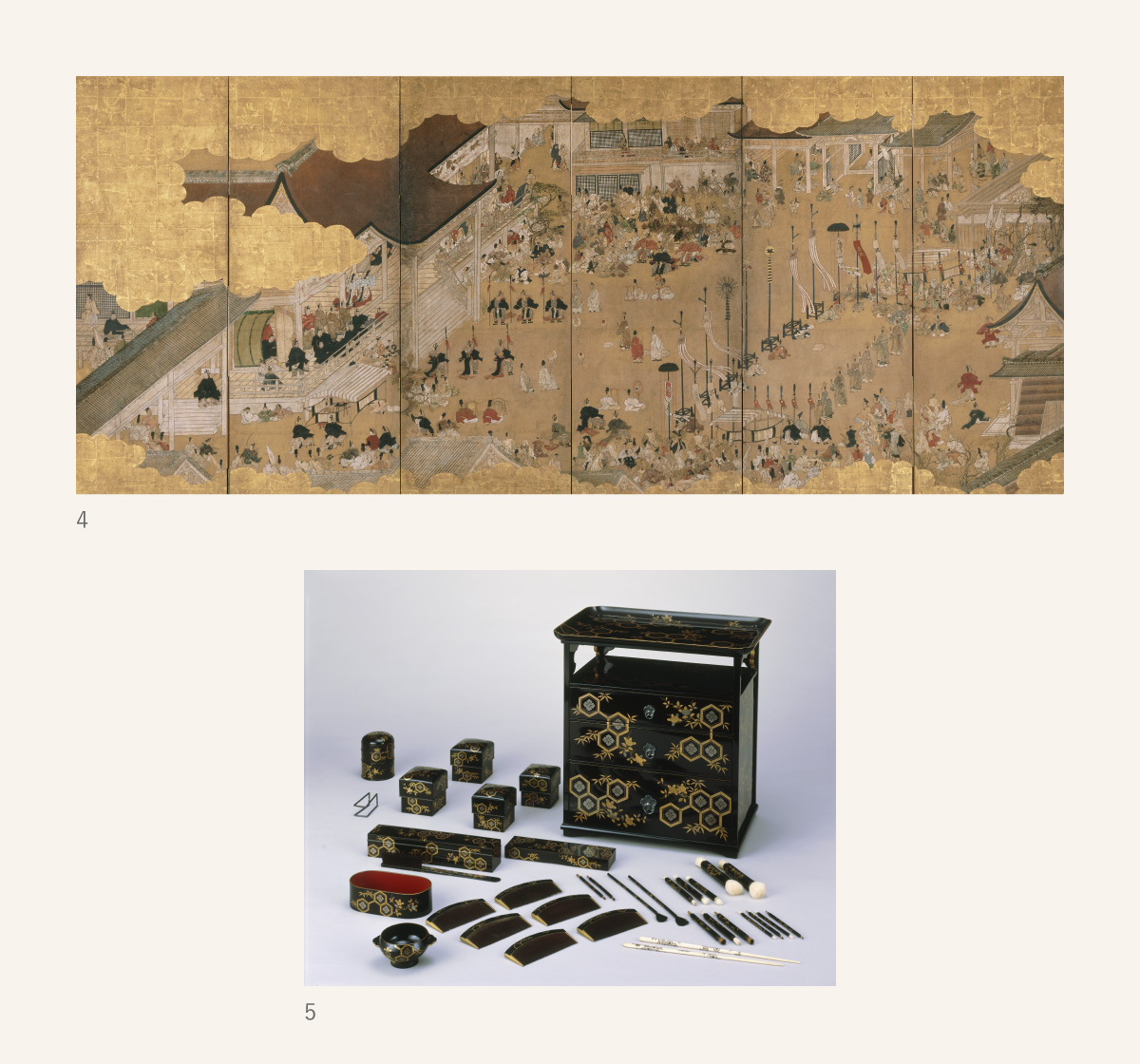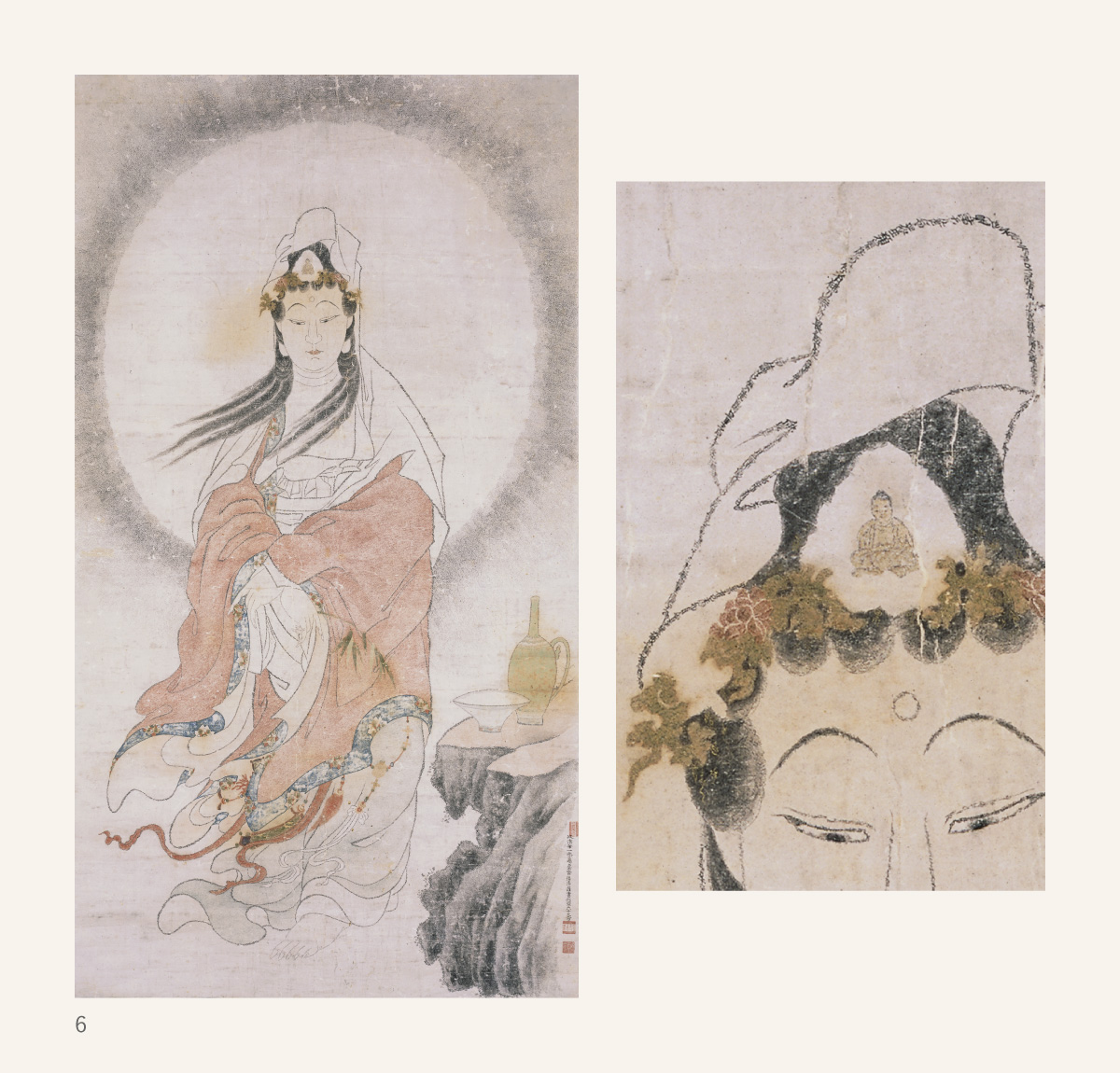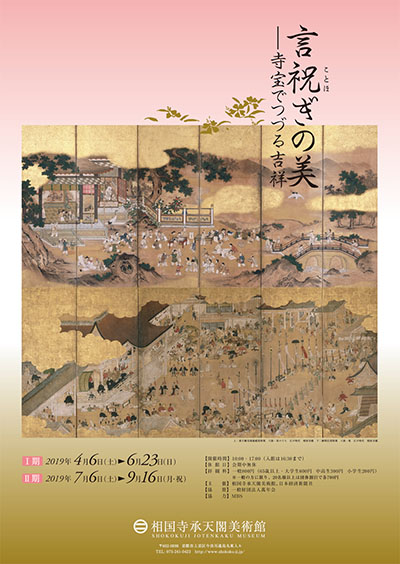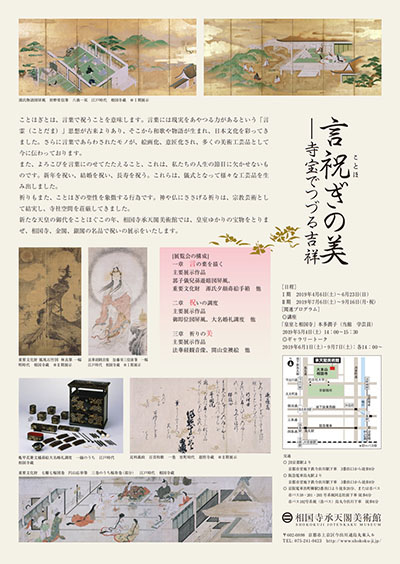EXHIBITION
KotohogiAuspicious Treasures of the Temple
Period Ⅰ : April 6th (Sat) to June 23rd (Sun), 2019 /
Period Ⅱ : July 6th (Sat) to September 16th (Mon/Holiday), 2019
Overview
Kotohogi refers to celebrating with words. The concept of words having the power to change reality, called kotodama, has existed since ancient times. The literary arts of Japanese waka poetry and storytelling grew from this concept and helped shape Japanese culture. The expressions of words also continue to be used even now as inspiration for a variety of other arts and crafts such as paintings and designs.
In addition, the expression of joy with words is essential for the major turning points in our lives. We celebrate the new year, weddings, and long life in this way. These events have taken on ceremonial forms, leading to the creation of a various of crafted objects.
Prayer is also an act which symbolizes the sanctity of kotohogi. Prayers offered to God or the Buddha led to the realization of the sacred arts which have given a solemn character to temple and shrine spaces.
To celebrate the ascent to the throne of a new Japanese emperor, Shokokuji Jotenkaku Museum within the Shokoku-ji temple grounds is holding a special exhibition of treasured artifacts from the temples of Shokoku-ji, Kinkaku-ji, and Ginkaku-ji, intermixed with treasures linked to the royal family.
Highlights
Highlights 1A dazzling collection of treasures linked to the royal family.
Shokoku-ji is located in the northern part of the Kyoto Imperial Palace. With connections such as the sub-temple, Jishoin, being the location where the Katsuranomiya family attained enlightenment, Shokoku-ji and the royal family are deeplly linked, and temple’s precious relics are evidence of this as well. To celebrate the ascent of a new Japanese emperor, a variety of treasures linked to the royal family such as a book said to contain imperial letters by Emperor Gomizuno, who ruled after the Edo period and the decorative paintings on a sliding door (by Maruyama Okyo) taken from the dwelling of Empress Kyoraimonin, Lady-in-Waiting to Emperor Momozono will be on display.
Highlights 2Legendary treasures exhibited for the first time
Shokoku-ji’s greatest treasure in its Edo period records is a collection of secret handwritten letters sent to a Buddhist monastery by Emperor Gokomatsu. Emperor Gokomatsu (1377 – 1433) was the emperor reigning when Shokoku-ji was built, and Shokoku-ji has always treasured this relic linking the temple to this historical figure. Although these letters have never been exhibited at any museum before, for this event they will be on display along with pictures from the Edo period.
“Hokekyo Kannonzo,” a work by Kato Nobukiyo (1734 – 1810) which uses the words of the Lotus Sutra to depict the contour of Kannon on a grand scale will also be exhibited for the first time.
Exhibition structure

- 1
- Folding screen depicting the great-grandson of Kaku Shigi at play, Six-panel screen, Edo period, Shokoku-ji collection
- 2
- Genji gold lacquer gourd box [important cultural property] 0.18 L, Muromachi period, Shokoku-ji collection *1st Exhibition Period
- 3
- Painted bowl with Tatsutagawa design, Ogata Kenzan, 0.18 L, Edo period, Jisho-ji collection *2nd Exhibition Period
1Depicting words
We have all enjoyed visualizing the scenes evoked by the words of distant foreign lands and stories of ancient nobility as paintings.
This exhibit spells out the elegant world of the Japanese royal family through linked articles and stories starring various emperors.
Folding screen depicting the great-grandson of Kaku Shigi at play
Six-panel screen, Edo period, Shokoku-ji collection
The individual at the center of the temple with a white beard is Kaku Shigi (693 – 781). He was a famous general in China’s Tang Dynasty, serving Emperor Genshu and four emperors after him as well. His children were all prosperous, and he was blessed with countless grandchildren. Imperial Prince Kojun (1722 – 1788) gave his life to deliver this folding screen to Shokoku-ji in 1788.

- 4
- Ascent to throne celebratory folding screen, six-panel screen, Edo period, Shokoku-ji collection
- 5
- Tortoise shell flower-shaped family crest and tachibana flower lacquered celebratory furnishings for the wedding of a feudal lord, One set, Edo period, Shokoku-ji collection
2Celebratory fixtures
Turning points in life are like special sunny days.
The ascent of new emperors to the throne and royal weddings are celebrated lavishly.
Imperial writings and letters are also taken out and displayed for special occasions at Shokoku-ji, and they will be available this time as well.
Tortoise shell flower-shaped family crest and tachibana flower lacquered celebratory furnishings for the wedding of a feudal lord
One set, Edo period, Shokoku-ji collection
In the Edo period, when the daughter of a samurai family married, she would bring a special set of furnishings called yomeiri dougu with her to her new family. The tortoise shell flower-shaped family crest and tachibana flower are created using the same technique. The image shows a portion of the set, including a comb stand and the drawer the set was kept in.

- 6
- “Hokekyo Kannonzo” Kato Eizo/Nobukiyo, scroll, Edo period, Shokoku-ji collection *1st Exhibition Period
3Beauty of prayer
This scripture conveys the essence of Buddhism to the present.
The letters have been embellished for extra brightness and radiance.
Various items in the temple space were donated by many people, including the royal family.
Come to this exhibition to see the solemn beauty prayer achieves.
“Hokekyo Kannonzo”
Kato Eizo/Nobukiyo, scroll, Edo period, Shokoku-ji collection *1st Exhibition Period
This text image of Kannon in white was created by Kato Nobukiyo (1734 – 1810). It is a masterpiece which uses the text from the 25th article of the Kannon Sutra in the Lotus Sutra scriptures to outline the contours of Kannon.
Basic information
- Dates
- 1st Exhibition Period: April 6th (Saturday) – June 23rd (Sunday), 2019
2nd Exhibition Period: July 6th (Saturday) – September 16th (Monday, holiday)
10:00 a.m. – 5:00 p.m. (No entry after 4:30 p.m.)
Open every day during the exhibition periods.
*Works on view are subject to change without notice.
- Entrance fees
-
General admission 800 yen 65 and older, college students 600 yen High school and Middle School students 300 yen Elementary school students 200 yen *For groups of 20 or more purchasing general admission tickets, a discounted rate of 700 yen is available.
- Main sponsor
- Shokokuji Jotenkaku Museum
Nikkei Inc. - Sponsor
- General incorporated foundation Mannenkai
- Cooperation
- MBS
Related events
Lectures
“The Royal Family and Shokoku-ji”
Junko Honda (museum curator)
May 4th, 2019 (Saturday) starting at 2:00 p.m.
Gallery talk
Speaker: Junko Honda
June 1st, 2019 (Saturday) starting at 2:00 p.m.
September 7th, 2019 (Saturday) starting at 2:00 p.m.
Press release
-
2019/3/1
“Kotohogi Auspicious Treasures of the Temple”press release issued.


